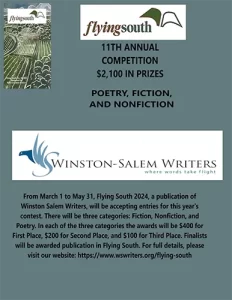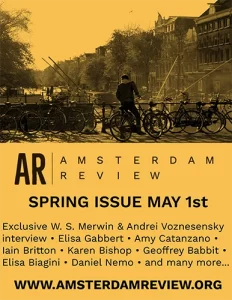Rock & Sling – Summer 2008
Volume 5 Issue 1
Summer 2008
Biannual
Rachel King
In her introductory note, the editor says she hopes the reader will “find both the wretchedness that makes us human and the grace that will ring.” This “Journal of Literature, Art, and Faith,” the final issue of Rock & Sling, fulfills the editor’s vision through stories and poems of both cruelty and assistance. Some of the pieces are blatantly Christian; other pieces indirectly display the Christian themes of suffering, grace, justice and redemption.
In her introductory note, the editor says she hopes the reader will “find both the wretchedness that makes us human and the grace that will ring.” This “Journal of Literature, Art, and Faith,” the final issue of Rock & Sling, fulfills the editor’s vision through stories and poems of both cruelty and assistance. Some of the pieces are blatantly Christian; other pieces indirectly display the Christian themes of suffering, grace, justice and redemption.
A combination of these themes – or lack of them– resonates through a nonfiction story and an essay about the Holocaust: “The Miracle of Eymoutiers” by Arnette and Mark Chorna and “Holocaust Studies” by Jehanne Dubrow. William Oren’s poem “Catechumen” records metaphors used to explain the soul, hell, and heaven, the metaphor for the last giving me a new way to think of justice:
What did he say
of heaven’s like?
That each vase in the cupboard
may be filled up to its edge.
So that
the potter’s crowd have more
or less depending
on the inner shape.
In Michael Henson’s “The True Story of the Resurrection,” the author, by imagining what people would do to Jesus if they captured him after his resurrection, playfully exposes contemporary society’s lack of awe and desire to tame the radical Jesus to fit their own life demands:
Woe unto ye, hypocrites [Jesus] called during a broadcast,
just before they snapped off the mike.
They had to bail him out of jail one night
for doing the woe-unto-ye thing
on the steps of city hall.
A number of other poems also use biblical characters as a catalyst for their writing: Andrew Miller writes “The Three Lessons of Martha,” Christina M. Rau writes “To Mary,” and Elizabeth Ann James writes “Looking for Mary Magdalene.”
This issue concludes with William Catling’s artist statement, a reflection on the pictures of his clay sculptures scattered throughout the journal. For readers who are disappointed that this journal is no more, they can find a similar, holistic Christian message – with slightly different aesthetics – in journals like Image or Relief.
[www.rockandsling.org/]




